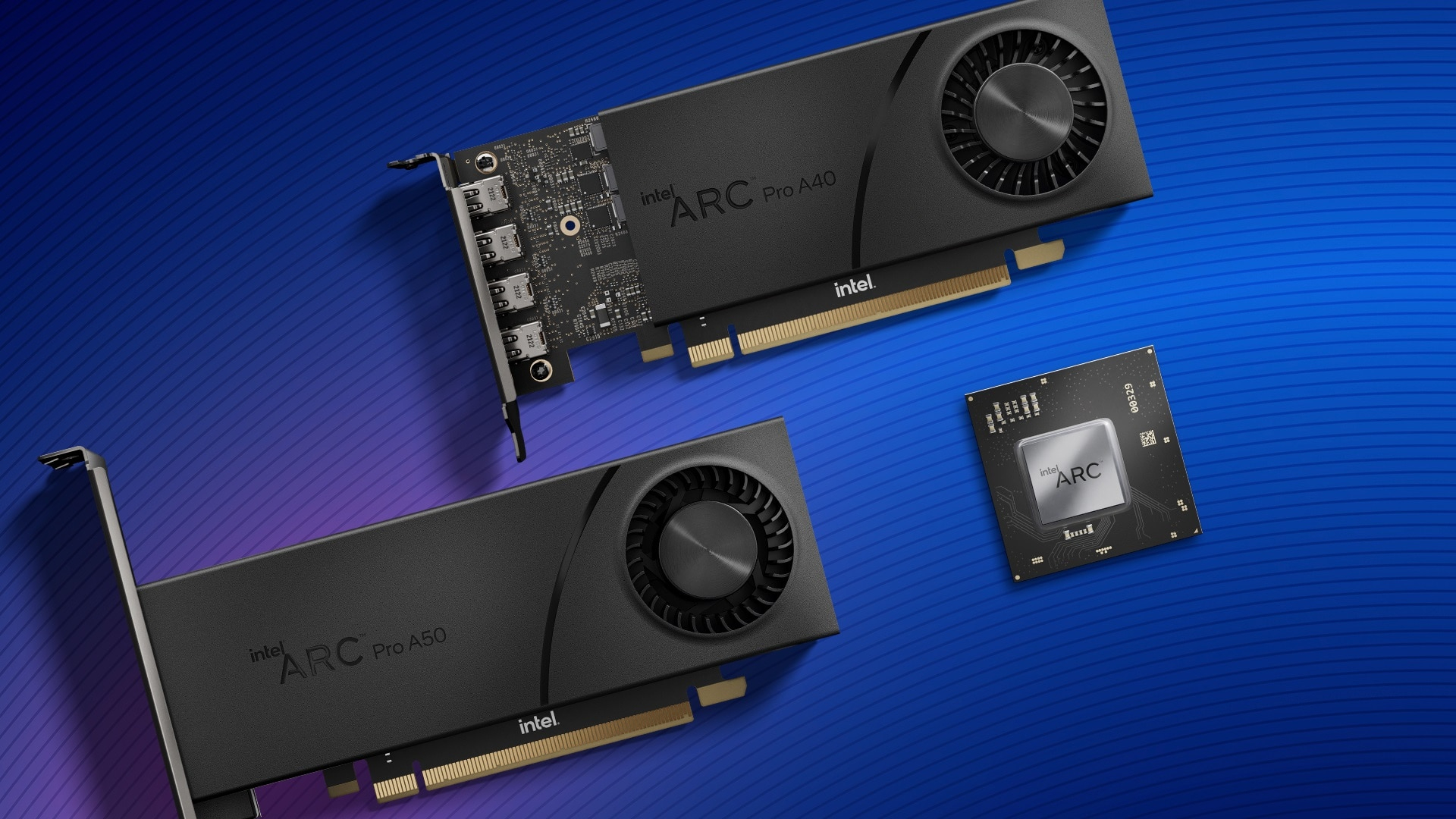Intel has announced a series of new additions to its new Arc GPU portfolio designed to power a broad range of professional devices.
The new Intel Arc Pro A-series includes a mobile GPU for business laptops, as well as single- and dual slot models for small workstations.
Each of the new GPUs features built-in ray tracing hardware, machine learning capabilities and what Intel is calling “industry-first AV1 hardware encoding acceleration”.
Troubles for Intel Arc
Intel’s latest foray into the GPU business has got off to a rocky start, with its first Arc cards suffering repeated delays as a result of the global chip shortage and other Covid-related factors.
The company is also said to be struggling to bring its first-gen Arc GPUs up to speed with current-gen models from Nvidia and AMD from a performance standpoint. It was even rumored that Intel might have to scrap its Arc Alchemist and Battlemage lines completely, as a result of unfixable hardware flaws kneecapping their performance.
The company moved swiftly to dismiss these claims and promised further updates later this quarter, but reports suggest the atmosphere inside the graphics division is becoming increasingly tense.
Although the picture doesn’t look all too bright for Intel in the consumer market, it’s possible the company may enjoy greater success in the business graphics space. With Nvidia steering away from GPUs for professional devices to focus more closely on processors for gaming rigs and data center servers, Intel has perhaps smelled an opportunity.
The company says it is targeting certifications for software spanning fields like architecture, engineering and design and the new Arc Pro A-series cards are also said to be optimized for video editing and 3D graphics software like Blender.
Intel has chosen not to share any details on the performance of the new GPUs at this stage, but professionals working across these kinds of industries will be keeping an eager eye out for the arrival of the first benchmarks.
Intel Arc Pro GPUs are expected to become available “later this year”, inside devices from “leading mobile and desktop ecosystem partners.





